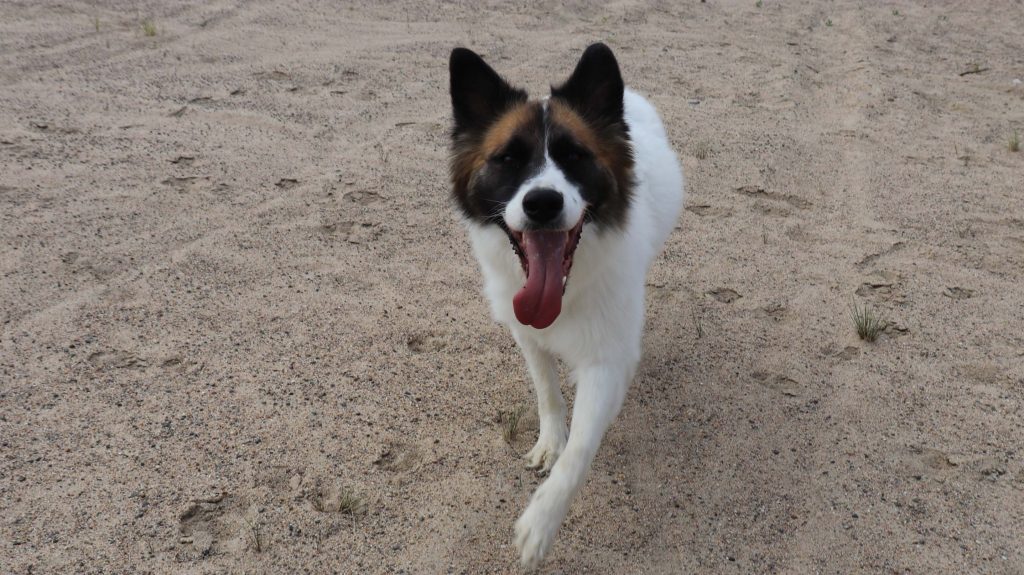An all-time favourite word of dog owners seems to be “No” or “NO!” or “no no no no no no no”. But does it really work? The quick answer is no. There is a much more effective and efficient way of getting your dog to put aside the unwanted behaviours and do the more acceptable ones instead. That is what this blog post is all about!

Although it makes sense for us to say no to our puppy that is chewing on our couch or soiling in the house. It is very important to understand how it affects your dog when you say no or yell at them for what they are doing and how they may interpret your reaction to their behaviours.
Dogs are amazing creatures that live in our homes and are expected to adapt and learn the English language faster than any human would be expected to. It takes a human baby a good 2-4 years to start understanding what words actually mean and how to use them. Better yet, it can take many months or even years of practice to learn a different language. So why do we expect quicker learning of English when it comes to the furry creature of another species living in our home?
Our dogs are a huge part of our families, they cuddle with us, they are there for us when we are lonely or happy, and they enjoy the good things in life: like walks, car rides and even playing and cuddling with our children.
I think we all owe it to our dogs to try and understand what it means to them when we yell NO.

Dogs are very smart yet mysterious creatures and there is still a lot we don’t know about the dog as a species and the way they think. However, I can assure you that yelling no at your dog is not going to help you achieve the results you really want.
Have you ever yelled no at your dog for soiling in the house? As you proceed to put them in their crate for a timeout or rub their nose in it. Then a couple of hours later they do it again but in a different spot?
This isn’t because your dog is thinking “pfft they think they can tell me where to go, I’ll show them”.
What is really happening here is that your dog didn’t’ receive any direction as to where he actually should be going. He only received feedback and maybe even a scary reaction or punishment for where he did go. The only thing that your frustrated reaction has taught him is 1. Not to go to the bathroom around that scary person yelling no at me. And 2. Try and go somewhere else next time

What you are teaching your dog by just saying no or yelling at them is that life is a game of trial and error. In some households, the consequences for being a “bad dog” can be scarier than others: Such as a smack on the nose, rubbing their face in it, squirt bottle, butt swat or maybe even a shock. While other reactions may just be a harmless and frustrated yell – it can still be just as damaging to your dog’s confidence and trust in you. All the while achieving nothing in the way of a step in the right direction.
Making their learning process a game of trial and error is a messy and frustrating game for not only the dog but the owners as well! There is an infinite number of places a dog can soil in your house, which makes house training a much longer learning process than it needs to be. They are essentially learning one spot at a time that “No!” that is not the right place to go, without any further direction of where they should go. This goes for any behaviour you would yell at your dog for, digging, soiling in the house or kennel, chewing furniture/shoes, jumping on people, nipping etc. Dog’s just simply do not learn best by someone yelling no.
“So, Amber, what would you do?”
In an instance of frustration where I just want to yell no at my dog or puppy, I take a moment to breathe and think about what they are doing. Then I do the following:
- Observe the unwanted behaviour they are doing
- Think about what I want them to do instead
- Redirect them to what I want them to do instead
- Praise when they do the acceptable behaviour (Going outside)
- Create a training plan to further their success with the chosen acceptable behaviour.
“But Amber, how do I get them to do something else if they love doing the unwanted behaviour?”
Now, this is where training comes in. After you redirect them at that moment, you need to give him a solid guide as to what is acceptable and when. We do this through training sessions. Digging may be acceptable, but only in a sandbox built for them to dig in – In these situations where you a want to change their behaviour you will need to take time and train your dog the acceptable behaviour you want them to do instead.

Without formal training sessions to guide them in the proper direction, it will be a long and frustrating road with your dog. Your dog needs to learn that when they do the appropriate behaviour, they get reinforcement from you – and in theory, the more a dog is reinforced to do something, the likelihood of it being repeated goes up. As a plus, you also become this amazing person full of praise and guidance vs. the scary person who yells at me and ends my fun.
Luckily! We have our online dog training courses to help you through this sort of thing! If you cannot find anything to help your situation in our courses, we have many other services and can help you achieve your training goal!
So, next time you think of just telling your dog no, and walking away when they stop doing what they were doing – take a moment and think about how this could be easier for you and your dog.
A good way to think about it is as if you were dealing with your friend: If they said something or did something you didn’t like would you just yell no and walk away? Expecting them to know what they did wrong? OR would you communicate a better way they could have handled the situation?
I know all owners only want the happiest of lives with their dogs, they only grace us with their presence for a short time. So why waste it by saying no constantly to them when we can make the most of it by giving them the proper education they need to live happily and successfully in our human world.
Until next time,
Happy Training, One Paw at a time
-Amber
For more information about our courses and services go to our Services page or Contact us for any questions you may have!

